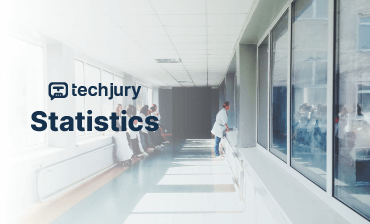The Silent Epidemic: Understanding Healthcare Data Vulnerabilities
In the complex landscape of digital healthcare, data breaches have emerged as a silent yet devastating epidemic, threatening patient privacy, institutional integrity, and the fundamental trust that underpins medical care. As technology advances, so do the sophisticated methods of cybercriminals, creating an increasingly challenging environment for healthcare organizations worldwide.
The Evolving Threat Landscape
Modern healthcare systems represent an intricate network of interconnected digital platforms, electronic health records, and complex technological infrastructures. This complexity, while enabling remarkable medical advancements, simultaneously creates numerous potential entry points for malicious actors seeking to exploit systemic vulnerabilities.
Statistical Insights: The Magnitude of Healthcare Data Breaches
Recent comprehensive research reveals a startling trend in healthcare data breaches. In 2022 alone, the healthcare sector experienced approximately 849 million attempted hacking incidents, with 571 confirmed data breaches. These numbers represent more than mere statistics—they symbolize millions of compromised patient records and potential personal security risks.
Financial Implications
The economic toll of these breaches is astronomical. The average cost of a healthcare data breach in 2022 reached [10.10 million], significantly higher than the global average of [4.35 million] across other industries. This financial burden extends beyond immediate recovery costs, encompassing legal expenses, regulatory penalties, and long-term reputational damage.
Technological Vulnerabilities: A Deeper Examination
Infrastructure Weaknesses
Many healthcare organizations continue to operate on legacy technological systems, creating inherent security vulnerabilities. Approximately 24% of physicians struggle to identify common malware signs, highlighting a critical skills gap in cybersecurity awareness.
Remarkably, the healthcare industry invests less than 6% of its budget on cybersecurity measures, compared to the recommended 21% industry standard. This underinvestment creates a perfect environment for potential breaches, leaving critical patient data exposed to increasingly sophisticated cyber threats.
Anatomy of a Healthcare Data Breach
Common Attack Vectors
Understanding the primary mechanisms of data breaches provides crucial insights into prevention strategies. Our research identifies several predominant attack methods:
Unauthorized Access Incidents
Approximately 34% of healthcare data breaches stem from unauthorized system access, representing a 162% increase over the past three years. These incidents often result from inadequate authentication protocols and insufficient access management systems.Phishing and Social Engineering
An alarming 88% of healthcare workers have opened phishing emails, demonstrating the human element‘s significant role in cybersecurity vulnerabilities. Cybercriminals increasingly exploit psychological manipulation techniques to gain system access.Insider Threats
Contrary to external perception, 82% of organizations cannot accurately determine the damage caused by insider attacks. Approximately 1,400 breaches occur due to internal negligence, compared to 700 malicious external attacks.
Case Studies: Real-World Breach Scenarios
The Anthem Blue Cross Breach (2015)
The most significant healthcare data breach in history involved Anthem Blue Cross, where 78.8 million patient records were compromised. This incident exposed sensitive personal information, including social security numbers, birthdates, and addresses, demonstrating the catastrophic potential of inadequate cybersecurity measures.
UCLA Health System Breach
In 2015, the UCLA Health System experienced a massive breach affecting 4.5 million patients. Hackers accessed comprehensive patient records, including health identification numbers, diagnostic information, and personal identifiers, illustrating the comprehensive nature of modern cyber attacks.
Prevention and Mitigation Strategies
Technological Interventions
- Advanced Encryption Protocols
- Multi-Factor Authentication
- Regular Security Audits
- Continuous Staff Training
- Robust Incident Response Plans
Regulatory Compliance
Healthcare organizations must adopt a proactive approach to cybersecurity, moving beyond minimal compliance requirements. This involves:
- Implementing comprehensive risk assessment frameworks
- Developing adaptive security architectures
- Investing in continuous employee cybersecurity education
- Establishing robust incident response mechanisms
Future Outlook: Emerging Technologies
Blockchain and Cybersecurity
Blockchain technology presents a promising solution for healthcare data protection. Projected spending on blockchain integration in healthcare is expected to reach [5.61 billion] by 2025, offering decentralized, immutable record-keeping capabilities.
Artificial Intelligence in Threat Detection
Machine learning algorithms are increasingly being deployed to identify potential security breaches in real-time, providing predictive and preventative capabilities that traditional security measures cannot match.
Conclusion: A Call to Action
Healthcare data breaches represent more than technological failures—they are systemic challenges requiring holistic, strategic interventions. Organizations must view cybersecurity not as an expense, but as a critical investment in patient trust and institutional resilience.
By embracing advanced technologies, fostering a culture of continuous learning, and maintaining rigorous security standards, healthcare institutions can transform potential vulnerabilities into robust, patient-centric digital ecosystems.
Key Recommendations
- Increase cybersecurity budget allocation
- Implement comprehensive staff training programs
- Adopt advanced technological protection mechanisms
- Develop adaptive, responsive security frameworks
- Foster a proactive cybersecurity culture
The future of healthcare data protection lies not in fear, but in strategic, informed action.
